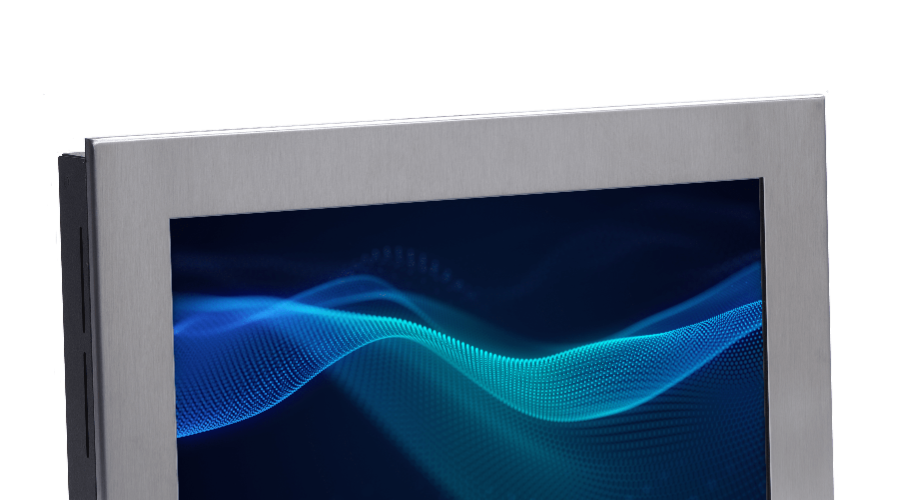Imagine a world without the vivid, high-resolution screens that bring our devices to life. Liquid Crystal Displays (LCDs) have become an integral part of our digital landscape, from the smartphones in our pockets to the monitors in our offices. But what exactly is an LCD, and how has it become a cornerstone of modern technology?
An LCD is an electronic display device that manipulates light to create images. Applying varying electric voltage to a liquid crystal layer induces changes in optical properties, allowing for the control of light passage. This seemingly simple concept has revolutionized how we interact with technology, enabling everything from portable electronic games to flat-panel televisions.
But the story of LCDs is not just about screens and pixels; it’s a tale of innovation, resilience, and adaptability. It’s about how a scientific curiosity from the 19th century transformed into a technology that shapes our daily lives and drives industries where reliability and precision are paramount.
Let’s explore the fascinating journey of LCD technology, from its early discoveries to its rugged applications in today’s demanding environments.
A Brief Timeline of LCD Technologies
- 1880s In 1888, the Austrian botanic physiologist Friedrich Reinitzer examined the unique properties of various cholesterol derivatives and discovered their two melting points. Over the next year, German physicist Otto Lehman continued his research on these “flowing” crystals and coined the term “cholesteric liquid crystals.” These materials remained a scientific curiosity for a significant period afterward without many practical applications.
- 1960s During the 60s, significant advancements in liquid crystal technology occurred. In 1962, Richard Williams of RCA discovered some interesting electro-optic characteristics of liquid crystals. By 1964, George H. Heilmeier, also of RCA, developed a method for working with liquid crystals to create displays, laying the groundwork for LCD technology. This era marked the transition of liquid crystals from scientific curiosity to technology with potential commercial applications and set the stage for developing modern LCDs.
- 1970s The 70s marked a pivotal time in LCD technology with the introduction of the first LCD watch in 1970 and the Twisted Nematic (TN) field effect, invented by Wolfgang Helfrich and Martin Schadt in 1972. These advancements laid the foundation for the widespread commercial use of LCDs in various electronic devices.
- 1980s The 80s saw further innovation in LCD technology, most notably with the launch of the first LCD television by Sharp in 1988. Throughout the decade, improvements in manufacturing processes and the development of Thin Film Transistor (TFT) technology enabled higher resolution and more colorful displays. These advancements contributed to the growing popularity of LCDs in consumer electronics, including computers and handheld devices.
- 1990s The 90s saw LCD technology become a standard feature in consumer electronics, including computer monitors, laptops, and flat-panel televisions. The decade was marked by the introduction of larger screens, with prototypes reaching up to 40 inches in diagonal size. The booming Japanese tech sector was instrumental in these advancements and the rapid global popularity of LCDs. By the end of the 90s, the widespread commercial use of LCDs had set the stage for continued innovation and growth in the 21st century.
- 2000s The 2000s were characterized by the rapid expansion of LCD technology into various markets. The introduction of energy-efficient LED backlighting and improved resolutions and contrast ratios led to the proliferation of LCD televisions, monitors, and mobile devices. The decade also saw the emergence of touchscreen LCDs, enabling new forms of interaction in smartphones, tablets, and other touch-enabled devices. LCDs became the preferred display technology, outpacing traditional CRT displays and paving the way for further innovations.
- 2010s In the 2010s, LCD technology continued to evolve, with advancements in areas such as Quantum Dot (QD) technology and High Dynamic Range (HDR), enhancing color accuracy and image quality. The integration of LCDs into various products, from automotive displays to wearable technology, became more prevalent. The decade also witnessed a trend towards ultra-thin and flexible LCDs, opening new possibilities for design and functionality. The continued growth and diversification of LCD applications solidified the tech’s position as a leading display solution in the modern era.
Current Uses for Rugged LCD Displays
Rugged LCDs are designed to withstand harsh environments and are utilized in various demanding applications. They are employed in manufacturing control systems in the industrial sector, where resistance to extreme temperatures, vibrations, and moisture is essential. In the military, rugged LCDs are used in vehicle-mounted systems, navigation, and mission-critical equipment, providing reliable performance in challenging conditions. The healthcare industry leverages rugged LCDs for medical imaging and diagnostic equipment, ensuring durability and precision. Additionally, outdoor kiosks, maritime navigation systems, and aviation control panels are common applications where rugged LCDs offer enhanced visibility and resilience. These specialized displays exemplify the adaptability and robustness of LCD technology in meeting diverse and demanding requirements.
Why the Military Trusts Rugged LCD Displays
Rugged LCDs have become a trusted technology in military applications due to their reliability, adaptability, and performance under extreme conditions. The specific characteristics that make LCDs suitable for military use include:
 Engineered for Resilience:Withstands harsh environments, including extreme temperatures, vibrations, and shock, and is constructed to be dustproof, waterproof, shockproof, and vibration-proof, and can frequently last up to 30,000 hours with continuous use.
Engineered for Resilience:Withstands harsh environments, including extreme temperatures, vibrations, and shock, and is constructed to be dustproof, waterproof, shockproof, and vibration-proof, and can frequently last up to 30,000 hours with continuous use. Adapted for Varied Climates:Designed to operate in a wide range of temperatures, from below-freezing to scorching environments.
Adapted for Varied Climates:Designed to operate in a wide range of temperatures, from below-freezing to scorching environments. Energy Efficient:Optimized to consume less power, making them ideal for battery-operated and remote military operations.
Energy Efficient:Optimized to consume less power, making them ideal for battery-operated and remote military operations. Enhanced Visibility:Provides sunlight readability and extensive brightness adjustments, ensuring clear viewing in all lighting conditions.
Enhanced Visibility:Provides sunlight readability and extensive brightness adjustments, ensuring clear viewing in all lighting conditions. Interactive Capabilities:This can include touchscreen technology that won’t overheat with prolonged use, facilitating ongoing usage in critical military tasks.
Interactive Capabilities:This can include touchscreen technology that won’t overheat with prolonged use, facilitating ongoing usage in critical military tasks. Compliance Assurance:Manufactured to meet specific military standards and certifications, reinforcing quality and performance.
Compliance Assurance:Manufactured to meet specific military standards and certifications, reinforcing quality and performance.
These attributes collectively make LCDs an indispensable technology in the military, where resilience, efficiency, and functionality are of utmost importance. With proven performance in demanding conditions, LCD technology stands ready to meet the unique requirements of military operations and equipment.
AbraxSys’ Innovations in the LCD Display Industry
Over the years, AbraxSys Corporation has become a trusted leader in industrial-grade LCDs, designed to meet the demands of critical visual applications and harsh environments with innovations in several key areas:
 Sunlight ReadabilityOur displays are configured for use in direct sunlight, incorporating higher nit luminosity and reflection-reducing filtering technology. We ensure clear visibility, no matter the lighting conditions.
Sunlight ReadabilityOur displays are configured for use in direct sunlight, incorporating higher nit luminosity and reflection-reducing filtering technology. We ensure clear visibility, no matter the lighting conditions. Rugged DesignsOffering a range of industrial TFT monitors with Ingress Protection levels up to IP67, our displays are built to withstand extreme conditions. Sizes range from 6.4″ to 32″, with standard and wide formats available.
Rugged DesignsOffering a range of industrial TFT monitors with Ingress Protection levels up to IP67, our displays are built to withstand extreme conditions. Sizes range from 6.4″ to 32″, with standard and wide formats available. Touch Screen TechnologyFrom Resistive to Projected Capacitive, we offer various touch screen options, enhancing user interaction across diverse applications.
Touch Screen TechnologyFrom Resistive to Projected Capacitive, we offer various touch screen options, enhancing user interaction across diverse applications. Legacy SupportWe support traditional resolutions like VGA, SVGA, XGA, and Low-Scan “Legacy” video formats, bridging the gap between past and present technologies.
Legacy SupportWe support traditional resolutions like VGA, SVGA, XGA, and Low-Scan “Legacy” video formats, bridging the gap between past and present technologies. Outperforming the PastOur LCDs outperform the CRT displays of the past, leading to true “industrial” grade rugged monitors that sometimes operate over 100,000 hours longer.
Outperforming the PastOur LCDs outperform the CRT displays of the past, leading to true “industrial” grade rugged monitors that sometimes operate over 100,000 hours longer. Extreme ConditionsDesigned for high-dust and high-moisture scenarios and temperatures as low as -40C and well over +60C degrees, our rugged displays are built for the most challenging industrial work environments.
Extreme ConditionsDesigned for high-dust and high-moisture scenarios and temperatures as low as -40C and well over +60C degrees, our rugged displays are built for the most challenging industrial work environments. Quality and DurabilityOur industrial-grade displays outperform regular LCDs, offering improved picture quality and durability thanks to thin-film transistor technology.
Quality and DurabilityOur industrial-grade displays outperform regular LCDs, offering improved picture quality and durability thanks to thin-film transistor technology.
Our commitment to quality, innovation, and adaptability ensures that our displays provide the resilience, efficiency, and functionality needed in any industry, any environment, any time.
Trust AbraxSys’ Rugged LCD Displays for Any Application
From the early discoveries of the 1880s to the cutting-edge innovations of the 21st century, the journey of LCD technology has been marked by relentless progress and adaptability. Today, LCDs are not just a part of our daily lives; they are essential tools in industries where reliability, resilience, and precision are paramount.
At AbraxSys, we embrace this legacy of innovation, crafting rugged LCDs that meet the unique demands of industrial, marine, and military applications. Our products are more than just screens; they are solutions engineered to withstand extreme conditions, optimized for energy efficiency, and designed for clear visibility.
In a world where technology constantly changes, the need for quality and commitment remains constant. That’s why we focus on not just meeting but exceeding our customers’ expectations. Whether it’s sunlight readability, extreme temperature tolerance, or legacy support, AbraxSys delivers.
Contact us today to talk about your rugged LCD needs.



